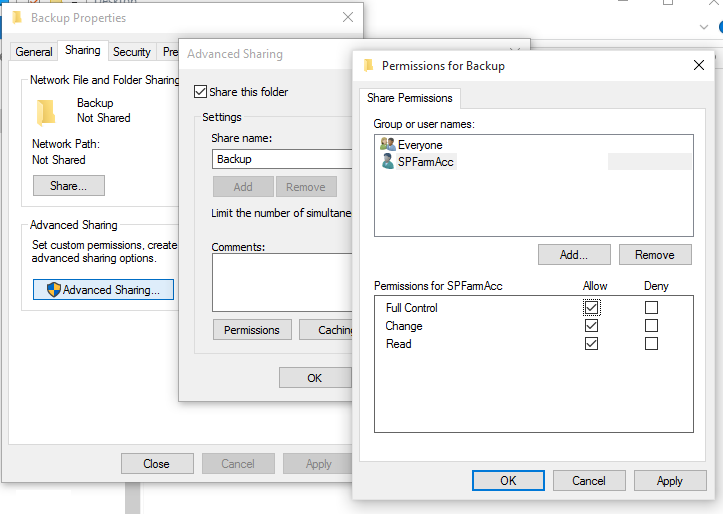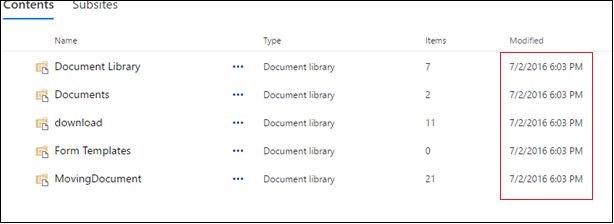Requirements to check before moving on to the Errors section..
- Shared Folder need to be created & full control has to be granted to timer job, SQL Server service accounts and CA’s app pool account
- SQL Server VSS Writer service, that facilitates the backup/restore, should be running
- SharePoint Administration Service should be running on all servers of the farm
Error 1: Here WSS_xxx is any database.
Object WSS_XXXX failed in event OnBackup. For more information, see the spbackup.log or sprestore.log file located in the backup directory.
SqlException: Cannot open backup device ‘\\Backup\spbr0000\0000015d.bak’. Operating system error 3(The system cannot find the path specified.).
BACKUP DATABASE is terminating abnormally.
| Possible Reason | Solution |
| The path given for the backup is wrong | Check the path & Correct it. It must be a Shared folder |
| Insufficient privileges, i.e. The Windows SharePoint Services Timer V4 (SPTimerV4) and the SQL Server service account perform backup/restore operations on behalf of the requested user. Hence these accounts should have full control on the backup locations | While sharing the folder, granting ‘Full Control’ to ‘Everyone’ will not work. The domain account(ideally), under which the Timer Service & SQL Server service execute, should be explicitly granted ‘Full Control’ on the shared folder |
Find SQL Server Accounts that carry out backup/restore by checking the below services…

Sharing the folder:

Error 2: User Profile Synchronization service instance causes this issue.
FatalError: Object UPS failed in event OnBackup. For more information, see the spbackup.log or sprestore.log file located in the backup directory.
SPDuplicateObjectException: An object of the type Microsoft.Office.Server.Administration.ProfileSynchronizationUnprovisionJob named “ProfileSynchronizationUnprovisionJob” already exists under the parent Microsoft.SharePoint.Administration.SPTimerService named “SPTimerV4”. Rename your object or delete the existing object.
| Possible Reason | Solution |
| The ‘User Profile Synchronization service'(CA -> Manage Services on server) instance is in ‘Stopping’ state | Let the service instance be in a Start/Stop state. Not in ‘ing’ state. |
Note: Usually this error is thrown when we try to unprovision a service instance which is already in ‘stopping’ state. Here the timer job may not be trying to unprovision the instance, however, it checks the job queue to ensure that no jobs are executing so that the system gets stored/backed up in a stable state.
Error 3: Search Service Application causing the issue
FatalError: Object Search Service Application failed in event OnBackup …
| Possible Reason | Solution |
| The Timer job service account doesn’t have permission on the Search Service Application | Grant Full Control permission to the timer job service account on the Search Service Application |
| Search Service account doesn’t have permission to the shared folder | Share the folder to the search service account with full control |
Note: Try narrowing down the permissions as much as possible. It’s not advisable to grant Full Control unless it’s really needed.



